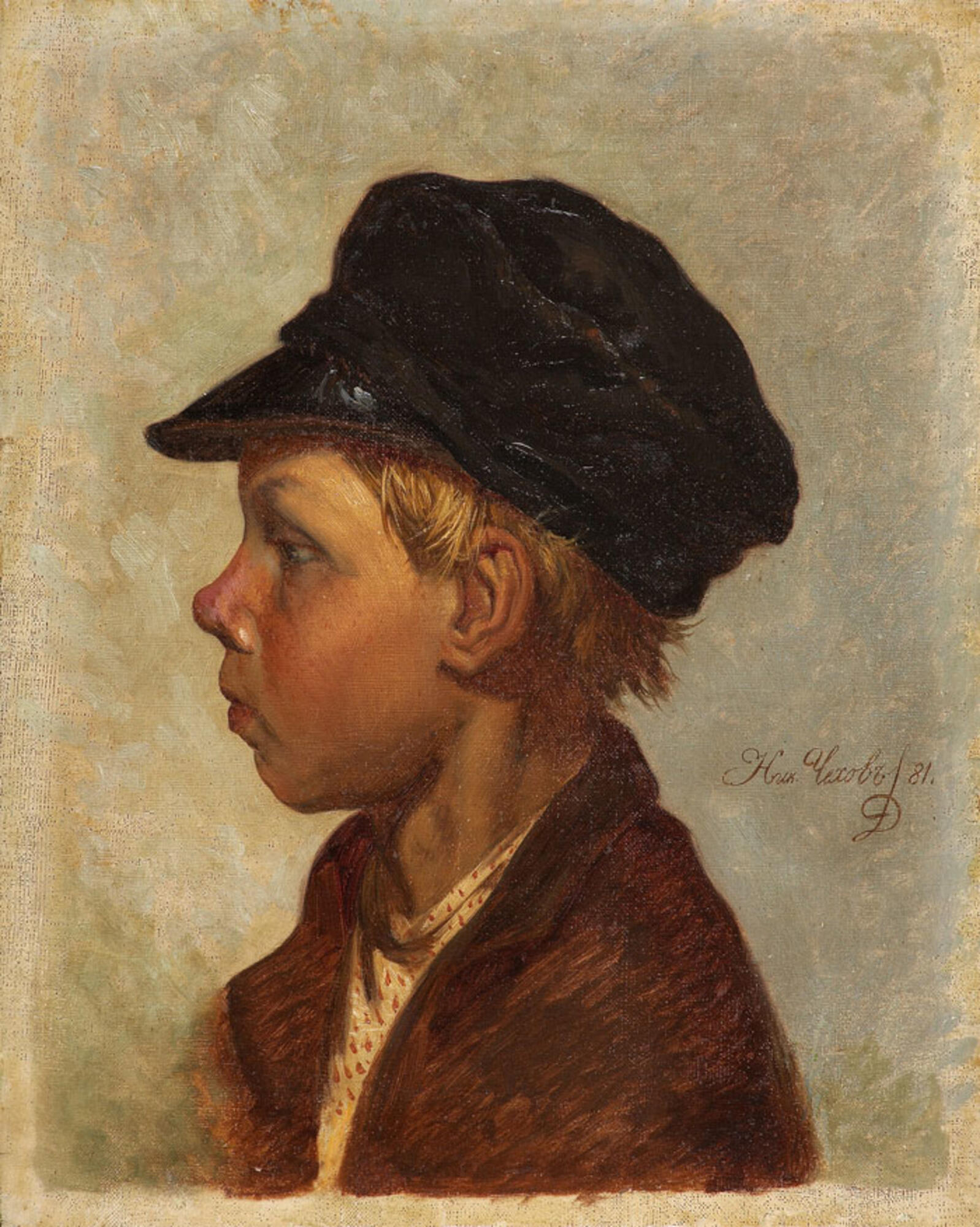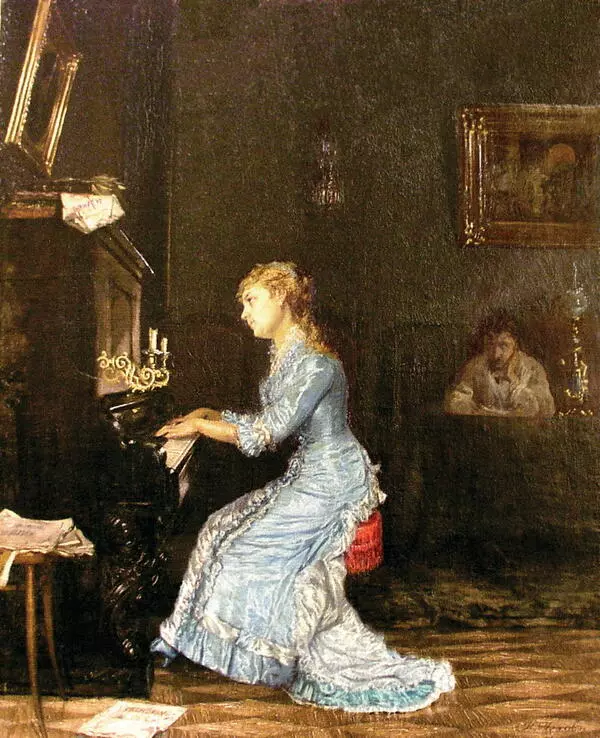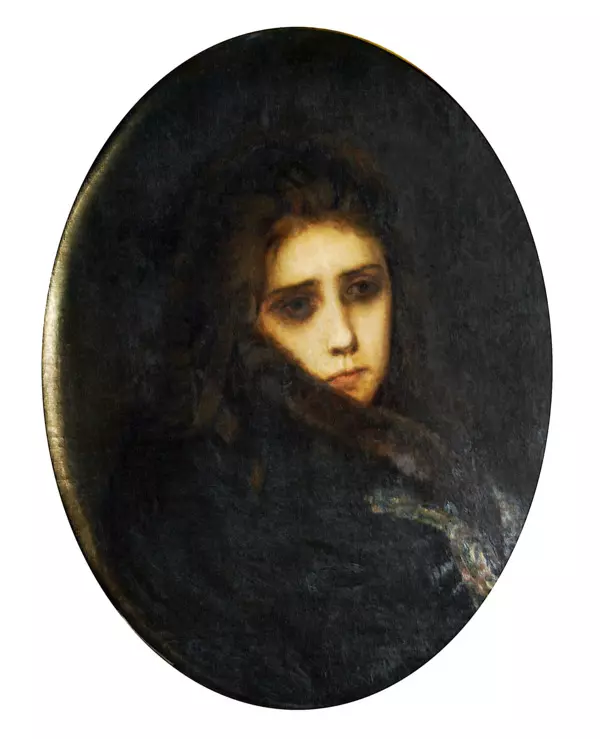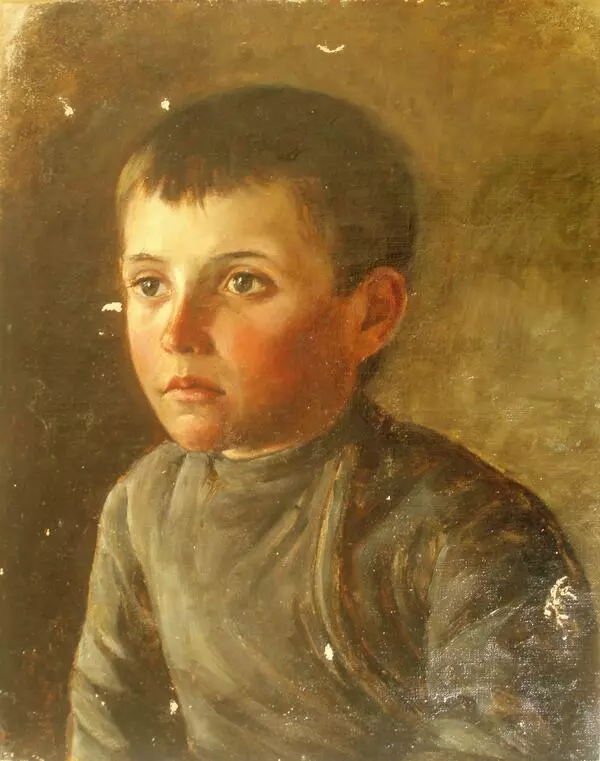Today the name of Nikolai Chekhov is more likely to remind of his well-known younger brother Anton Chekhov, a writer and playwright. Unfortunately, few people know that his older brother, Nikolai Chekhov, was a professional painter. According to his brother, he had ‘a good, strong Russian talent.’ Early death did not allow his talent to unfold in full force, yet the artist left behind an interesting and diverse heritage.
Chekhov’s first steps in art were related to illustration and caricature. At that time, he worked closely with his brother Anton, appearing in well-known humorous magazines in Moscow and St. Petersburg as an outstanding artist. He created the first illustrations of Anton Chekhov’s literary experiments. No less interesting was his pictorial heritage. Many great works were created by him in the genre of portrait.
A special place in the portrait heritage of the author is occupied by a small canvas ‘Peasant Boy’, which is now kept in the Taganrog Art Museum. For a long time it was a part of a private collection of the famous Moscow collector Felix Vishnevsky’s descendants. That period appears as the second name of the canvas - “Vanka Zhukov”.
The person depicted in the portrait is still called Vanka and is associated with the character of the famous Chekhov story. Nobody is surprised that Chekhov’s famous story ‘vanka’ was written five years after the painting had been made.
There is a gloomy peasant boy of about seven years old. Behind the childish features, there is already a formed character of the little man. The work is devoid of details – all attention is focused on the child’s portrait. With a free, confident brush, the artist paints the face of his character: a pursed mouth, a “stubborn” chin, an upturned snub nose, sad pensive eyes. Particular expressiveness is given to the boy’s appearance by disobedient golden strands of hair, getting out from under an adult cap pulled over his forehead.
By a lucky coincidence or by the will of providence, this work ended up in the artist’s homeland Taganrog a hundred years after its creation.
Chekhov’s first steps in art were related to illustration and caricature. At that time, he worked closely with his brother Anton, appearing in well-known humorous magazines in Moscow and St. Petersburg as an outstanding artist. He created the first illustrations of Anton Chekhov’s literary experiments. No less interesting was his pictorial heritage. Many great works were created by him in the genre of portrait.
A special place in the portrait heritage of the author is occupied by a small canvas ‘Peasant Boy’, which is now kept in the Taganrog Art Museum. For a long time it was a part of a private collection of the famous Moscow collector Felix Vishnevsky’s descendants. That period appears as the second name of the canvas - “Vanka Zhukov”.
The person depicted in the portrait is still called Vanka and is associated with the character of the famous Chekhov story. Nobody is surprised that Chekhov’s famous story ‘vanka’ was written five years after the painting had been made.
There is a gloomy peasant boy of about seven years old. Behind the childish features, there is already a formed character of the little man. The work is devoid of details – all attention is focused on the child’s portrait. With a free, confident brush, the artist paints the face of his character: a pursed mouth, a “stubborn” chin, an upturned snub nose, sad pensive eyes. Particular expressiveness is given to the boy’s appearance by disobedient golden strands of hair, getting out from under an adult cap pulled over his forehead.
By a lucky coincidence or by the will of providence, this work ended up in the artist’s homeland Taganrog a hundred years after its creation.









